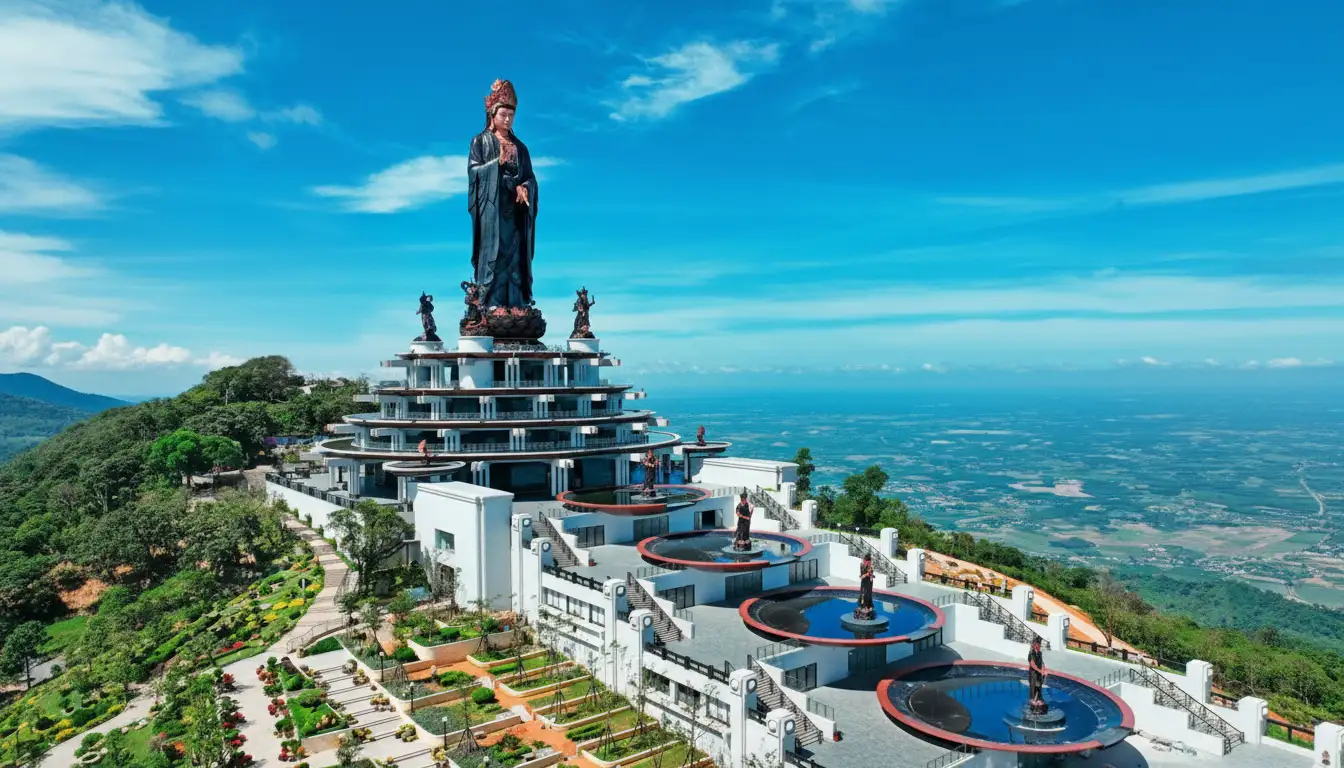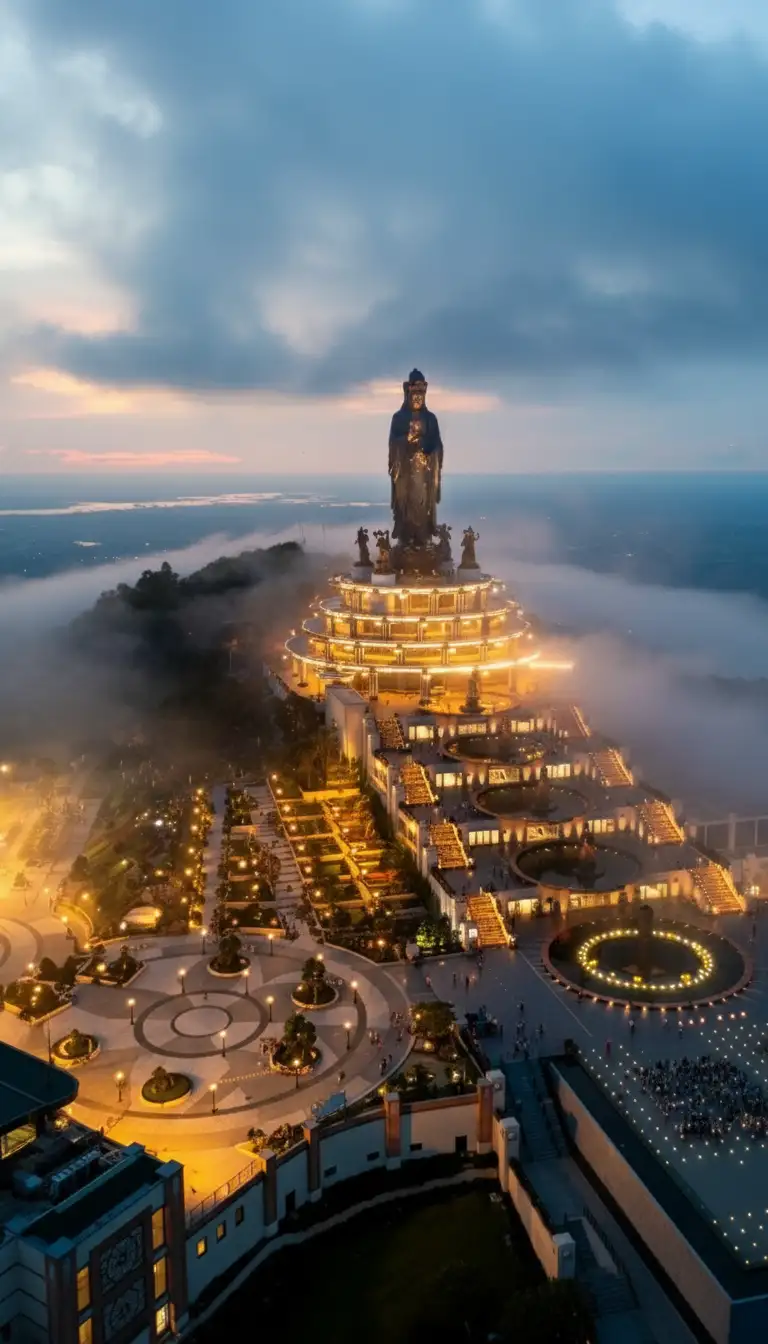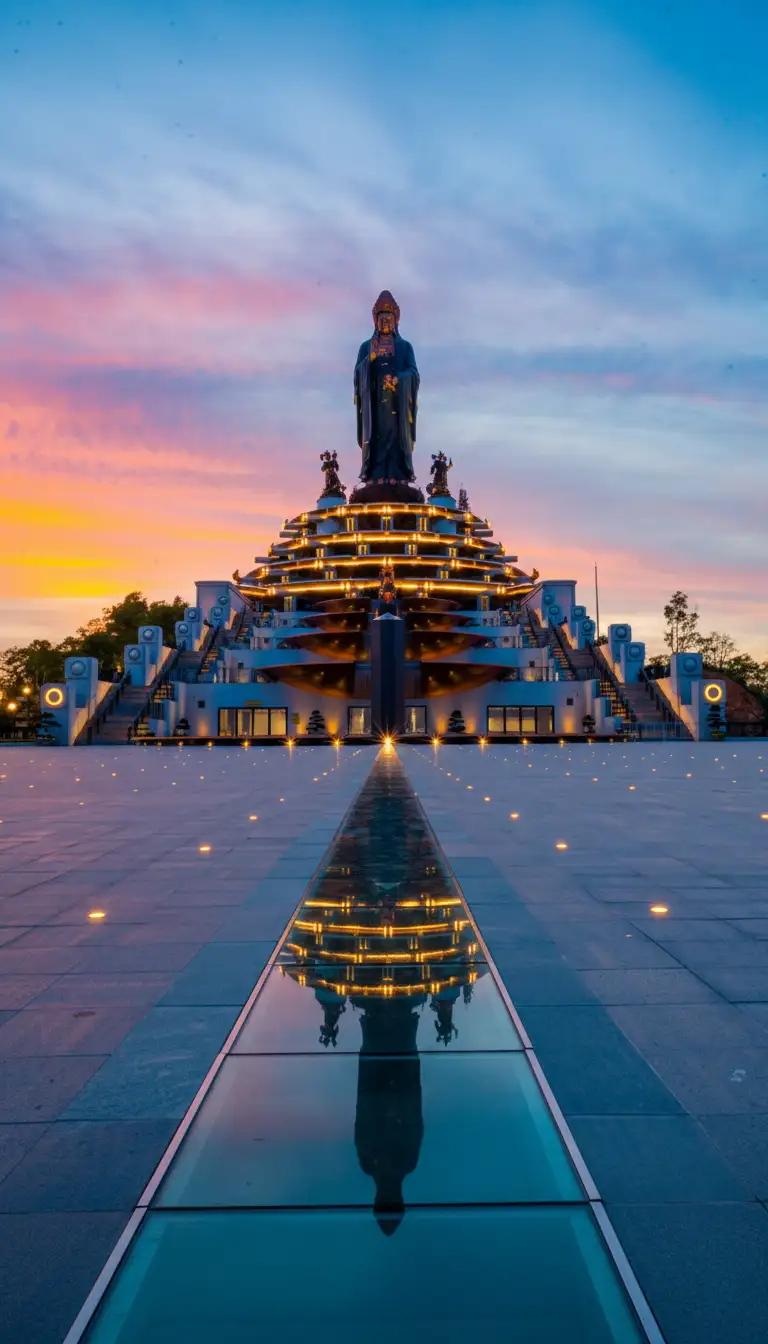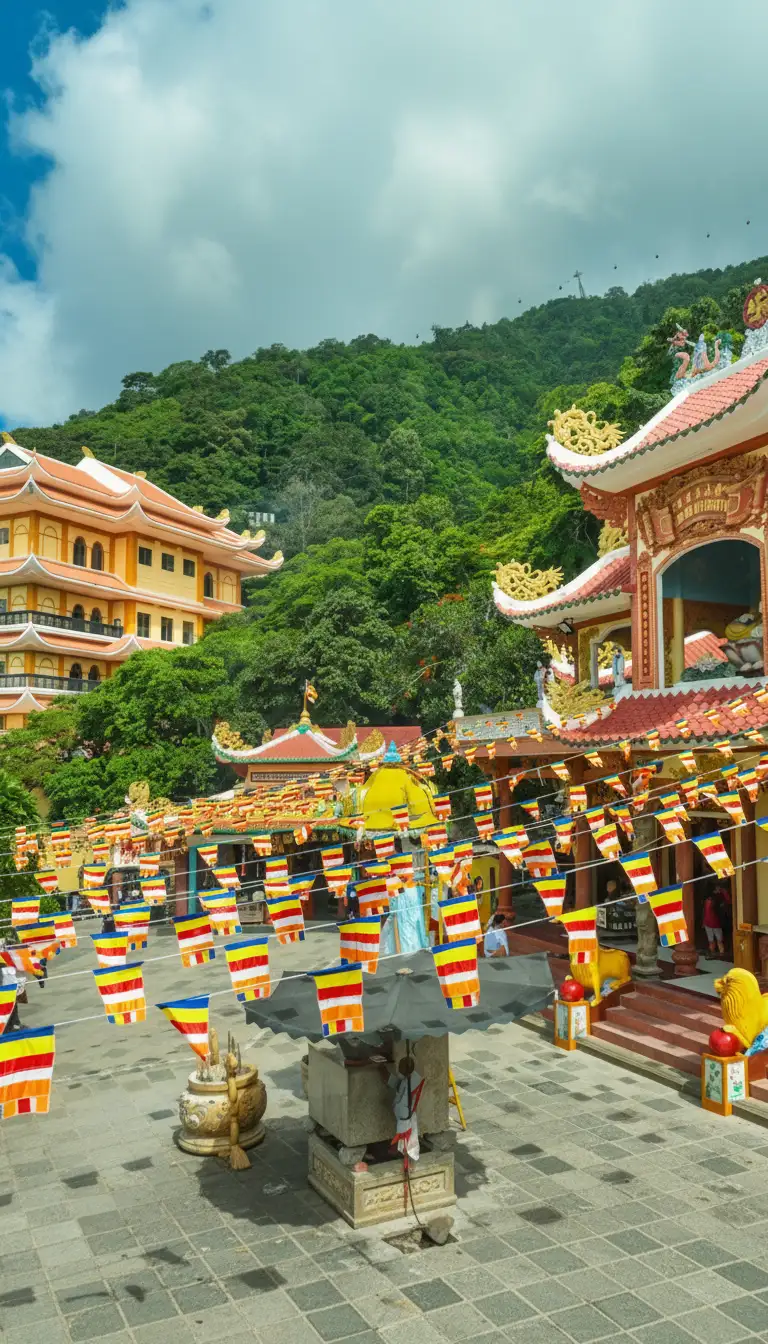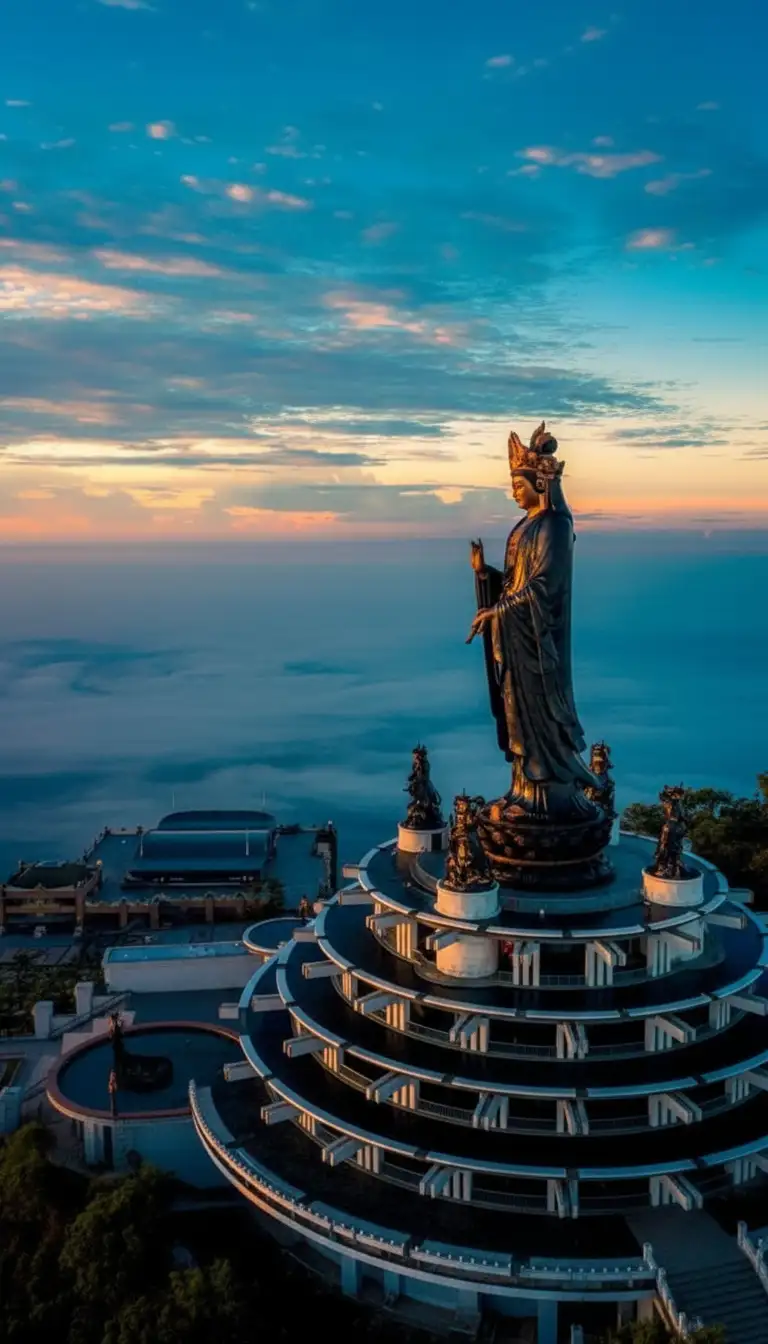Quick Facts
| Data Field (Title) | Content | Icon/Note |
|---|---|---|
| Vietnamese Name | Lễ hội Núi Bà Đen | Named after Bà Đen Mountain (Black Virgin Mountain), the highest peak in Southern Vietnam. |
| Status | National Intangible Cultural Heritage of Vietnam (recognized since 2019). | A major spiritual and folk festival. |
| Location | Bà Đen Mountain Complex, Tây Ninh Province (near the Cambodian border, Northwest of HCMC). | Center of worship for Linh Sơn Thánh Mẫu. |
| Timing | Two main annual festivals: 1. Spring Festival (Lễ hội Xuân): Throughout the 1st Lunar Month (Tết season, main days 18th-19th). 2. Vía Bà Festival (Lady's Feast): 5th-6th day of the 5th Lunar Month. | The Spring Festival is the most crowded and festive period. |
| Significance | Worship of Linh Sơn Thánh Mẫu (Holy Mother of Linh Son), believed to be the guardian spirit of the land, attracting millions of pilgrims seeking health and fortune. |
I. Overview: The Sacred Pilgrimage of Southern Vietnam
The Bà Đen Mountain Festival is one of the largest and most popular spring pilgrimage events in Southern Vietnam. Held at the majestic Bà Đen Mountain (also known as Black Virgin Mountain), the festival honors Linh Sơn Thánh Mẫu (The Holy Mother of Linh Son), a revered local Goddess whose legend involves bravery, sacrifice, and deep piety.
The festival transcends simple religious observance; it is a profound journey “back to the roots” that attracts millions of devotees, especially during the first lunar month (Tết holiday) when the atmosphere is at its most vibrant.
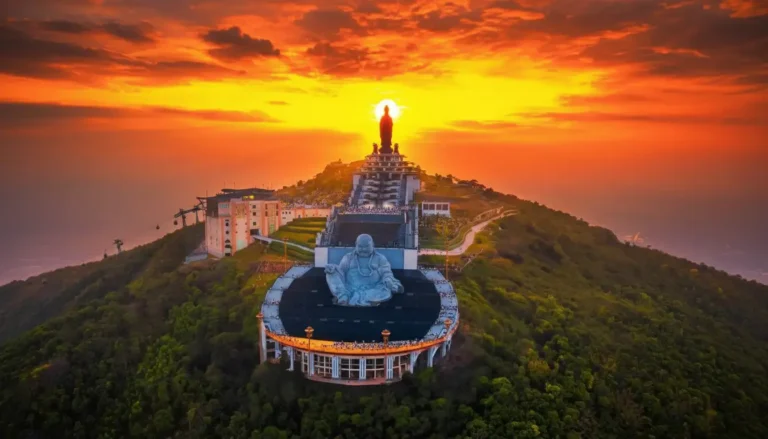
II. Key Festival Seasons and Rituals
The mountain hosts numerous religious events throughout the year, but two are paramount:
A. Bà Đen Mountain Spring Festival (Lễ hội Xuân Núi Bà Đen)
Timing: Throughout the 1st Lunar Month (January/February, coinciding with Tết).
Atmosphere: Extremely lively and festive, combining Buddhist and folk traditions. Pilgrims flock to the mountain complex (temples, pagodas, and the peak) to pray for a prosperous and peaceful New Year.
Activities: Cultural performances, martial arts displays, traditional folk games, and massive prayer gatherings. The recent installation of a modern cable car system makes the pilgrimage more accessible to the peak, home to the impressive Tây Bổ Đà Sơn Bodhisattva statue and the summit’s spiritual attractions.
B. Vía Bà Festival (Linh Son Holy Mother Festival)
Timing: 5th to 6th day of the 5th Lunar Month (May/June). This is considered the Goddess’s official feast day.
Main Ritual: The Statue Washing Rite (Lễ Tắm Bà): Held solemnly at midnight on the 5th day. The statue of Linh Sơn Thánh Mẫu is ritually cleansed with fragrant water, symbolizing purification and spiritual renewal.
Significance: A deeply revered ceremony that reaffirms the community’s devotion to the Holy Mother.
III. The Legend and Spiritual Significance
The festival’s origins are rooted in the legend of Lý Thị Thiên Hương, a virtuous young woman who took her own life to protect her honor after her fiancé left for war. She later appeared in a dream to a monk, who built a temple in her honor. Because she had dark skin, she was affectionately given the title Bà Đen (Black Lady).
Linh Sơn Thánh Mẫu: She is worshipped as a protector, a goddess of fortune, and a symbol of fidelity.
The Spiritual Apex: Bà Đen Mountain is regarded as a sacred axis connecting heaven and earth, a place where prayers for peace, good harvest, and personal health are believed to be powerfully answered.
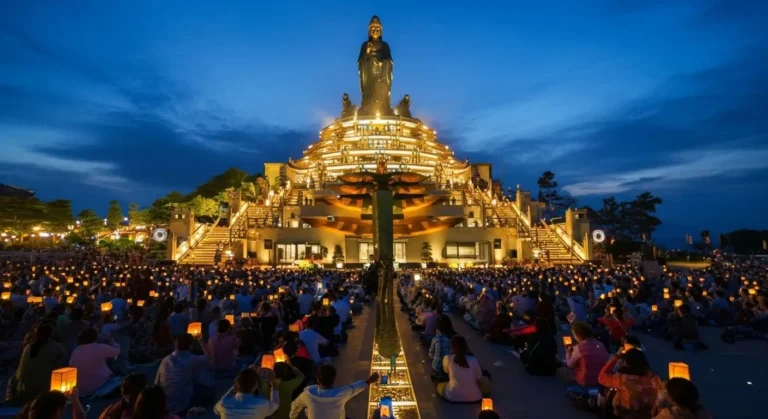
IV. Visitor Information
| Guide Field | Details |
|---|---|
| Best Time to Visit | The entire 1st Lunar Month (Spring) for the most vibrant cultural and spiritual experience. The dry season (Dec-April) offers the best trekking weather. |
| Attractions | The Linh Sơn Tiên Thạch Pagoda (Bà Pagoda) on the mountain side, the complex of temples, and the summit's new spiritual park featuring the tallest bronze Buddha statue in Asia. |
| Transportation | Modern cable cars provide quick and scenic access to both the pagodas (Chùa Bà route) and the mountain peak (Đỉnh Vân Sơn route). |
| Pilgrimage Etiquette | Visitors should wear modest clothing that covers shoulders and knees, especially when entering the pagodas and temples. Be prepared for very large crowds during the Spring Festival. |
| Local Connection | The mountain is also an important site for the Cao Đài religion, whose Holy See is located nearby in Tây Ninh City. |
